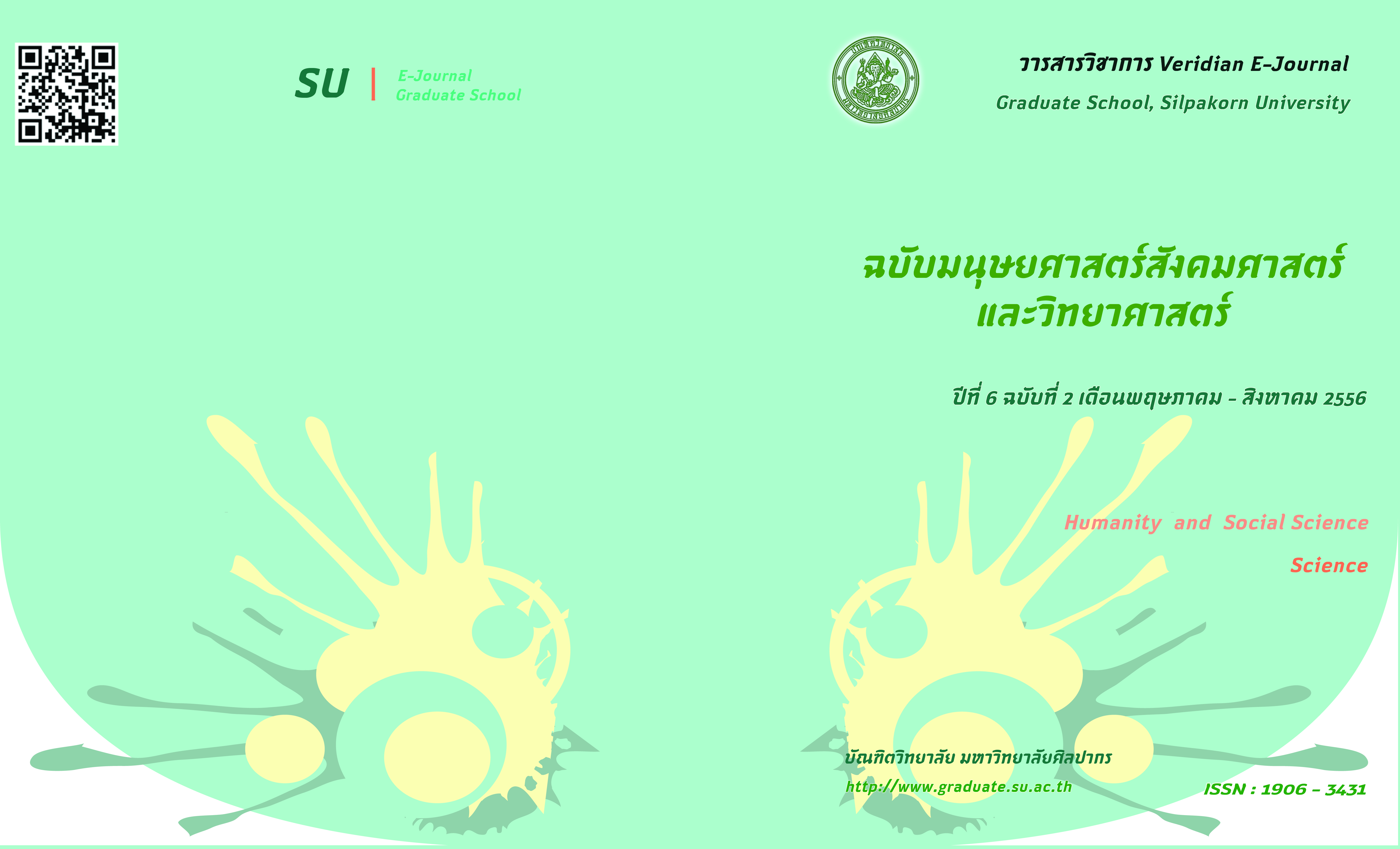การประเมินประสิทธิภาพสหกรณ์การเกษตรในจังหวัดเพชรบุรี
Main Article Content
Abstract
บทคัดย่อ
บทความวิจัยนี้ มีวัตถุประสงค์ คือ 1) เพื่อประเมินประสิทธิภาพของสหกรณ์การเกษตรในจังหวัดเพชรบุรีด้วยตัวแบบ CCR (Charnes Cooper and Rhodes Model) และตัวแบบ BCC (Banker Charnes and Cooper Model) ของวิธีการ DEA (Data Envelopment Analysis) และ 2) เพื่อวิเคราะห์ปัจจัยจากคะแนนประสิทธิภาพของสหกรณ์การเกษตรในจังหวัดเพชรบุรีที่เกิดจากทุกการจัดหมู่ของปัจจัยนำเข้าและปัจจัยผลผลิตด้วยตัวแบบ CCR และตัวแบบ BCC ของวิธีการ DEA กลุ่มตัวอย่างที่ใช้ในการวิจัยเป็นสหกรณ์การเกษตรในจังหวัดเพชรบุรีที่ดำเนินงานปกติ จำนวน 18 แห่ง สำหรับตัวแปรในการวิจัยใช้ตามแนวทางของกรมตรวจบัญชีสหกรณ์ (2549) ประกอบด้วย ตัวแปรปัจจัยนำเข้า 4 ตัวแปร คือ 1) ต้นทุนธุรกิจหลัก 2) ค่าใช้จ่ายเฉพาะธุรกิจและดำเนินการ 3) หนี้สินทั้งสิ้น และ 4) ทุนของสหกรณ์ และตัวแปรปัจจัยผลผลิต 1 ตัวแปร คือ รายได้ การวิเคราะห์ข้อมูลใช้โปรแกรม DEAP 2.1 ของ Coelli (1996) ในการวัดประสิทธิภาพของวิธีการ DEA และใช้โปรแกรม SPSS ในการวิเคราะห์ปัจจัยจากคะแนนประสิทธิภาพ DEA ของทุกการจัดหมู่ ด้วยการสกัดปัจจัยจากวิธีองค์ประกอบหลัก (Principal Component Analysis: PCA) และหมุนปัจจัยด้วยวิธีวาริแมกซ์ (Varimax) ผลการวิจัยพบว่า 1) มีสหกรณ์การเกษตรที่มีประสิทธิภาพจำนวน 4 และ 5 แห่ง เมื่อวัดประสิทธิภาพด้วยตัวแบบ CCR และ BCC ตามลำดับ 2) เมื่อพิจารณาคะแนนประสิทธิภาพเฉลี่ยจากการจัดหมู่แล้ว สามารถแบ่งสหกรณ์ออกเป็น 3 กลุ่ม คือ กลุ่มที่มีประสิทธิภาพสูง ปานกลาง และต่ำ 3) ผลการวิเคราะห์ปัจจัยจากคะแนนประสิทธิภาพ CCR จากทุกการจัดหมู่ พบว่า มี 2 ปัจจัย คือ ปัจจัยประสิทธิภาพโดยภาพรวม และปัจจัยประสิทธิภาพด้านทุน เมื่อพิจารณาจากคะแนนประสิทธิภาพ BCC สามารถสกัดได้ 2 ปัจจัย คือ ปัจจัยประสิทธิภาพในการจัดการค่าใช้จ่ายเฉพาะธุรกิจและการดำเนินการ และปัจจัยประสิทธิภาพด้านสินทรัพย์
Abstract
The objectives of the research are 1) To evaluate the efficiency of agricultural cooperatives in Phetchaburi province with CCR and BCC models of DEA approach, and 2) To analyze factors from efficiency score of the agricultural cooperatives in Phetchaburi province which obtained from the combination of inputs and output factor with CCR and BCC models
of DEA approach. The 18 operating agricultural cooperatives located in Phetchaburi province were employed as sample in this study. The variables applied in the research were taken from the Department of Cooperative Auditing (2006). There were 4 input variables; 1) main business costs 2) specific costs in business and operation 3) total debt, and 4) cooperative fund, and one output variable: income. In the data analysis, the DEAP 2.1 program of Coelli (1996) was applied to measure the efficiency of DEA approach and the SPSS program was used to analyze the factors from DEA efficiency score from the combination with PCA (Principle Component Analysis) and rotate the factors with Varimax method. The results showed that 1) there were 4 and 5 efficient agricultural cooperatives who by measuring with CCR and BCC models respectively. 2) When considering the average efficiency score from the combination, the cooperatives could be divided into 3 groups; high-efficiency group, medium-efficiency group, and low-efficiency group. and 3) According to the results of factor analysis from CCR efficiency score from the combination, there were 2 factors including the total efficiency factor and the cost efficiency factor. Whereas considering BCC efficiency score, it also extracted 2 factors which were the efficiency factor in specific cost management in business and operation, and the efficiency factor in asset.

